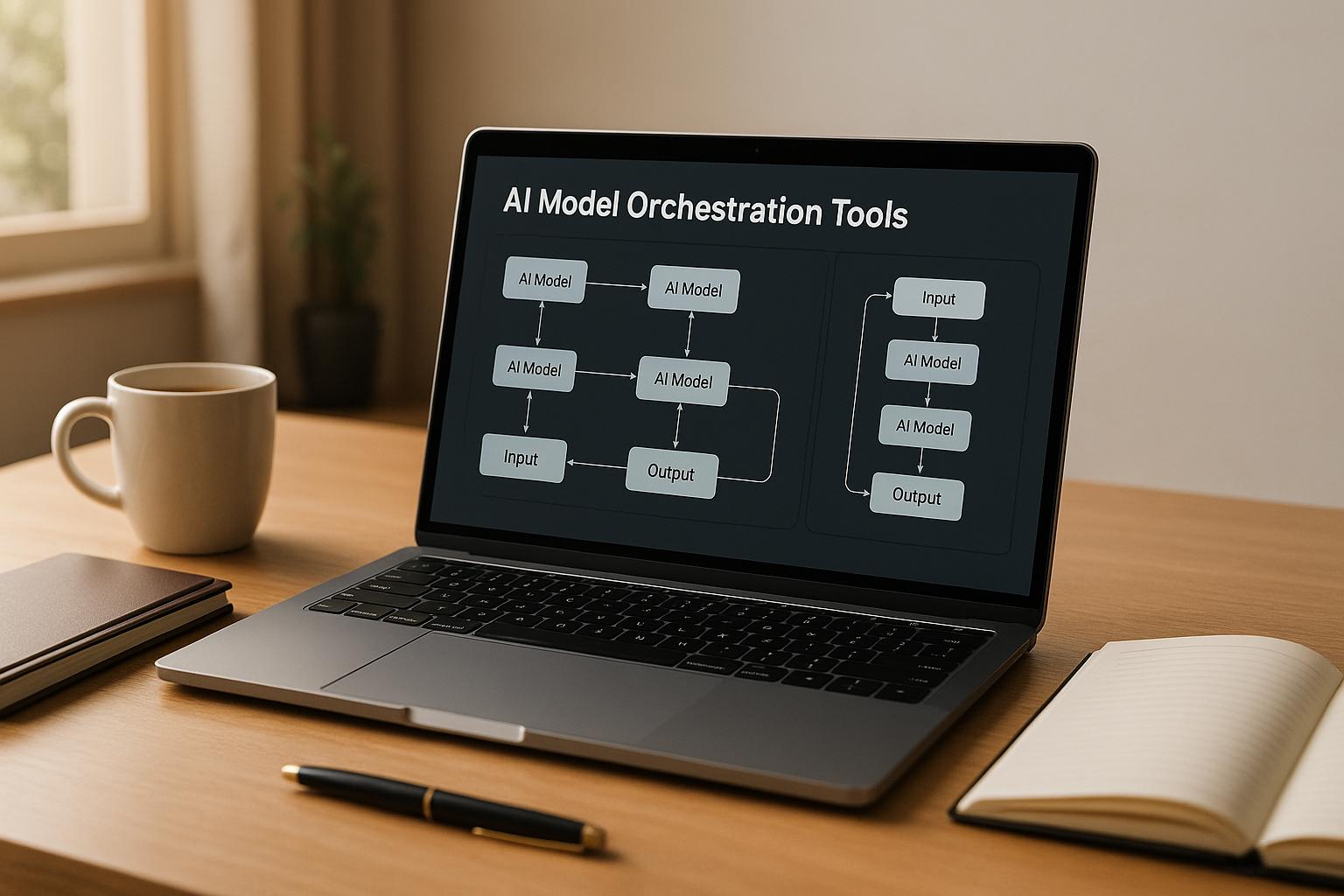
Managing AI at scale can be challenging, but the right orchestration tools can simplify workflows, reduce costs, and ensure compliance. Here's a quick guide to five reliable platforms that help businesses streamline AI operations:
AI orchestration tools save time and resources by automating deployment and monitoring. They also ensure governance and compliance, reducing risks tied to evolving regulations. Whether you're scaling LLMs or managing ML pipelines, these platforms provide the structure needed to grow confidently.
| Tool | Best For | Setup | Cost Management | Key Feature |
|---|---|---|---|---|
| prompts.ai | Multi-model enterprise AI | Cloud-based, quick setup | TOKN credits, real-time view | Unified access to 35+ LLMs |
| Kubeflow | Full ML lifecycle on Kubernetes | Complex Kubernetes setup | Varies with infrastructure | Kubernetes-native ML orchestration |
| Prefect | Data workflow automation | Simple Python install | Usage-based pricing | Python-native, cloud integrations |
| Flyte | Reproducibility in ML pipelines | Moderate setup required | Cloud costs, caching saves | Data lineage and versioning |
| Apache Airflow | General workflow management | Moderate to complex setup | Open-source, infrastructure | Handles advanced, custom workflows |
These tools simplify AI operations, helping businesses focus on scaling and innovation while keeping costs and risks in check.
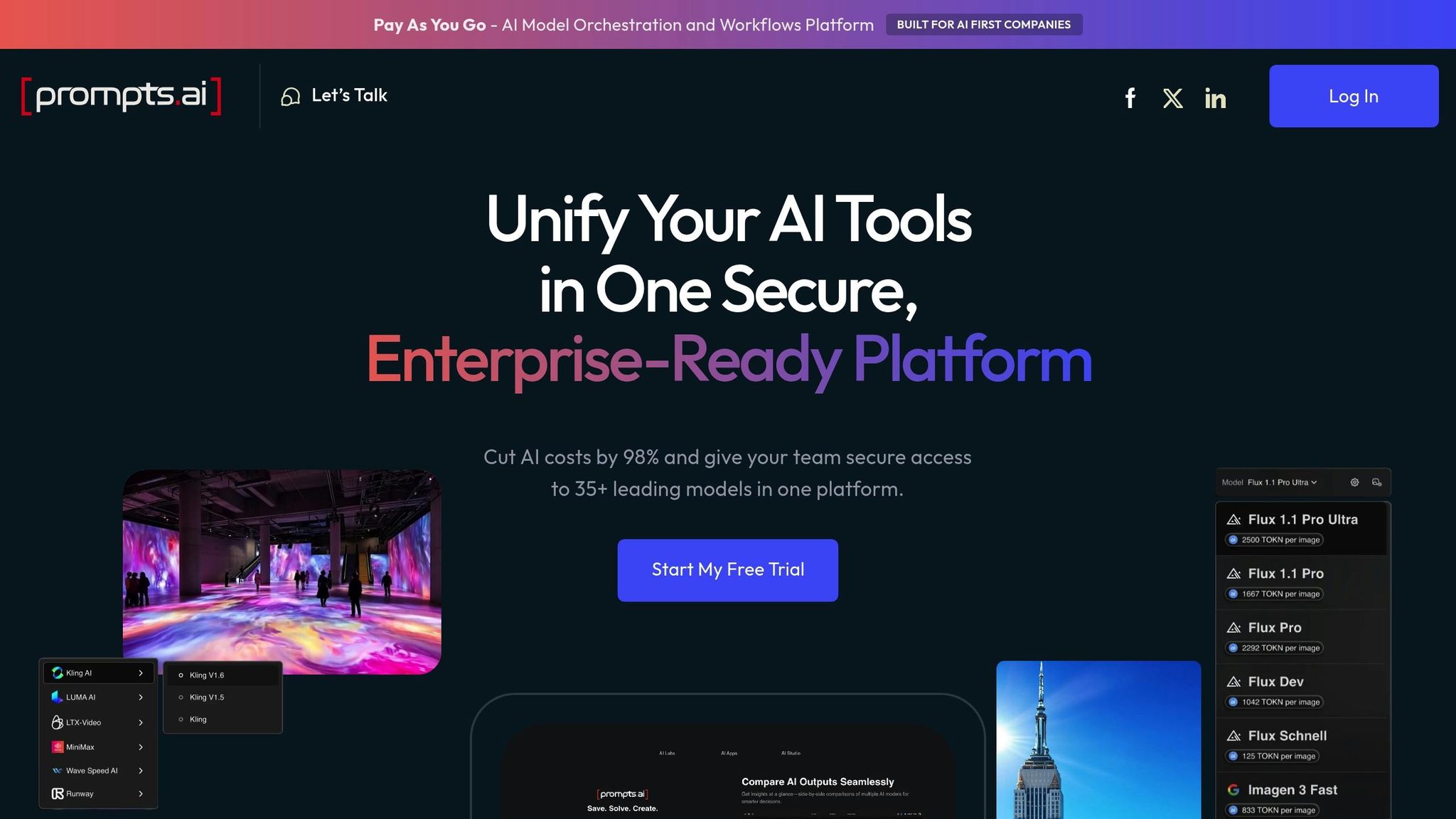
Prompts.ai is a powerful enterprise-level AI orchestration platform that brings together over 35 leading large language models - such as GPT-5, Claude, LLaMA, and Gemini - into one secure, unified system. By consolidating these models, the platform eliminates the clutter of multiple tools, making it easier for organizations to manage and deploy AI solutions across various departments.
Built to grow with your needs, prompts.ai supports the seamless addition of models, users, and teams. Its strong architecture, paired with real-time FinOps tools, ensures consistent performance while delivering actionable insights to optimize resources.
Prompts.ai’s interface is designed to work harmoniously with modern AI tools and existing technology stacks. The platform’s pay-as-you-go TOKN credits system makes spending more transparent and ties costs directly to usage, simplifying both budgeting and procurement.
With evolving federal regulations in mind, prompts.ai provides enterprise-grade governance tools and detailed audit trails critical for compliance. Its robust security framework ensures sensitive data remains under the organization’s control, while role-based access controls enforce strict policies to maintain data integrity across workflows.
Real-time FinOps tools provide CFOs and IT leaders with clear visibility into spending, linking costs to measurable outcomes. This approach can lead to an impressive 98% reduction in AI software expenses.
The platform’s effectiveness hasn’t gone unnoticed. GenAI.Works has named prompts.ai the top AI platform for enterprise problem-solving and automation. Additionally, user reviews on the prompts.ai website consistently reflect high satisfaction, with ratings of 4.8, 4.9, and 5.0. With its comprehensive features, prompts.ai sets a high standard as we look at other orchestration tools.
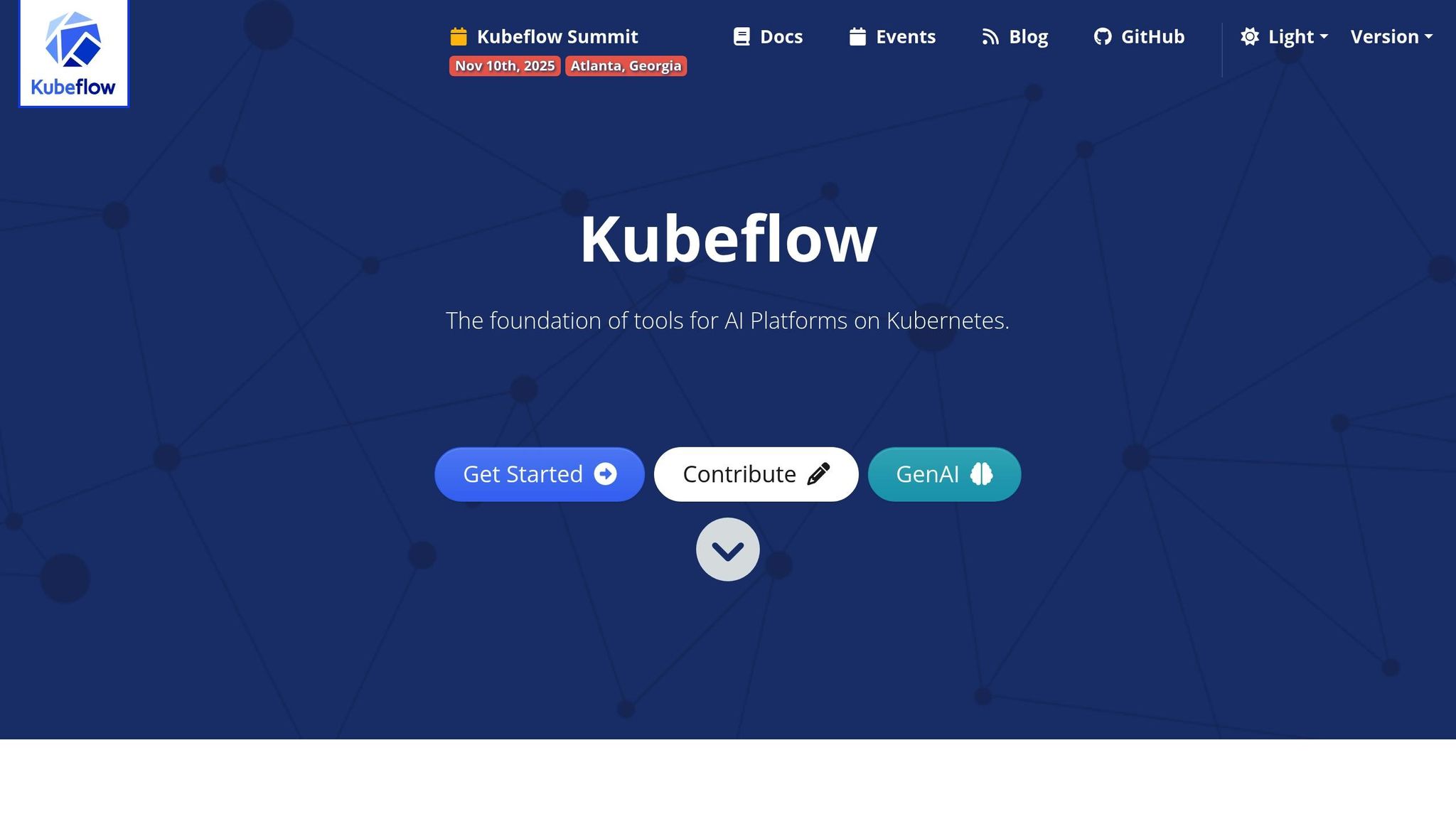
Kubeflow is an open-source platform designed to streamline machine learning workflows on Kubernetes. Originally created by Google, it simplifies the process of running ML tasks in containerized environments, offering portability, scalability, and ease of management. By integrating seamlessly with Kubernetes, Kubeflow helps organizations maximize their existing infrastructure, making it a powerful tool for modern AI deployments.
Built on Kubernetes, Kubeflow excels at horizontal scaling. It automatically distributes machine learning tasks across multiple nodes, whether you're running small experiments or deploying large-scale production systems. The platform supports popular frameworks like TensorFlow and PyTorch, ensuring efficient processing of even massive datasets.
Kubeflow breaks down complex workflows into smaller, independent steps. Each component runs in its own container, so if one part fails, it won’t disrupt the entire pipeline. This modular approach ensures consistent performance across environments, from local development setups to expansive production clusters.
One of Kubeflow's standout features is its ability to work seamlessly with widely-used machine learning tools. It supports Jupyter notebooks, TensorFlow, and PyTorch, allowing data scientists to stick with familiar tools while taking advantage of Kubeflow's orchestration capabilities. Its pipeline SDK, which uses Python, lets teams define workflows and run experiments across multiple frameworks in a unified environment.
Kubeflow also integrates with major cloud storage solutions, including Amazon S3, Google Cloud Storage, and Azure Blob Storage. This compatibility allows teams to maintain their existing data infrastructure while building interoperable AI workflows.
Kubeflow ensures security and compliance by leveraging Kubernetes' built-in Role-Based Access Control (RBAC). It keeps detailed audit logs of pipeline executions, deployments, and user activities, helping organizations meet regulatory requirements. Additionally, its experiment tracking tools create detailed records of model development, aiding reproducibility and transparency.
Kubeflow's architecture supports deployment on Kubernetes clusters optimized for cost-effective computing. By utilizing Kubernetes' autoscaling capabilities, workloads can adjust dynamically to meet processing demands, reducing unnecessary resource consumption and lowering operational costs.
The platform also features pipeline caching, which reuses identical outputs from previous runs. This reduces both processing time and expenses during iterative development cycles, making Kubeflow an efficient choice for long-term AI projects.
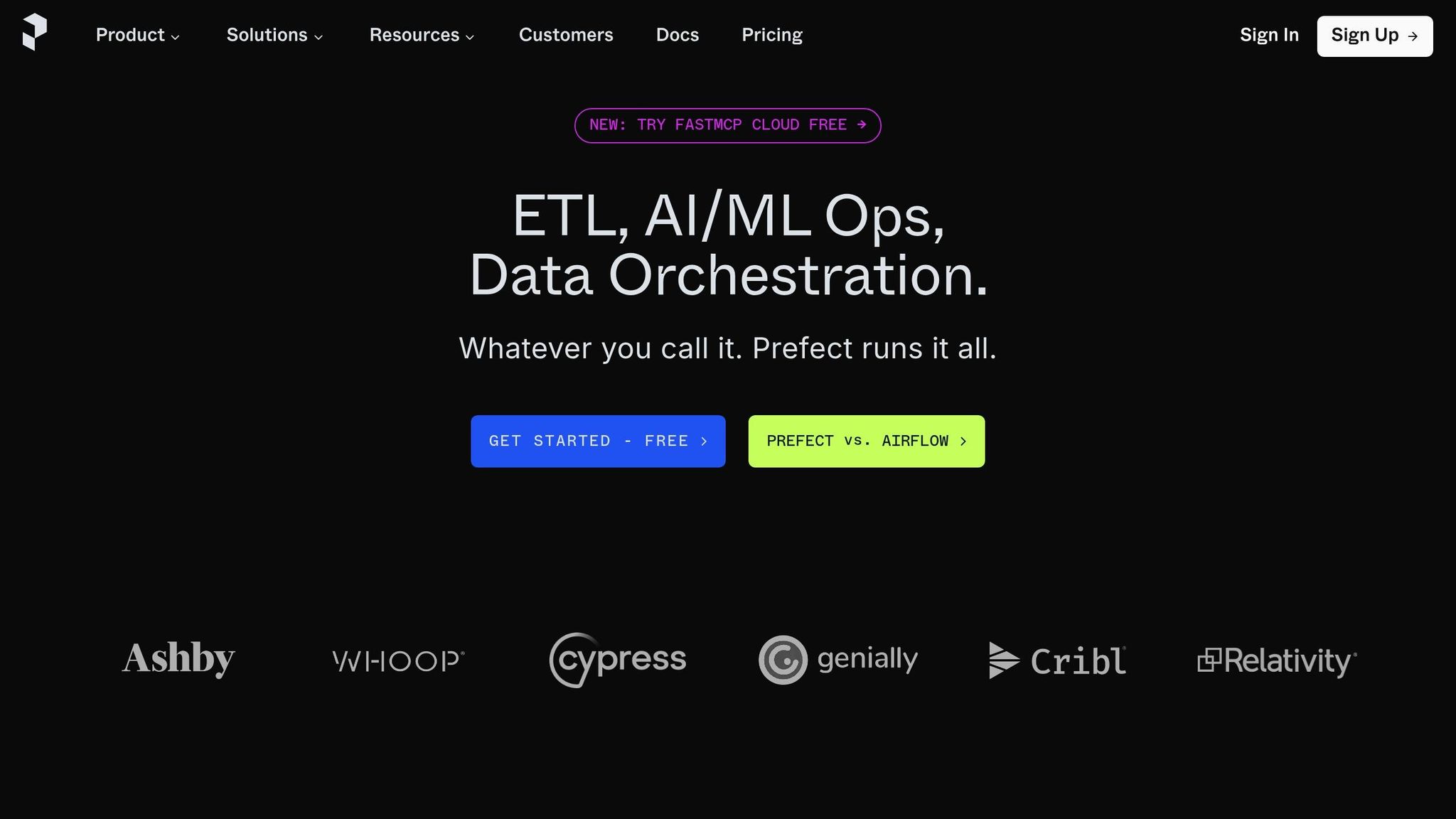
Prefect is a modern platform for orchestrating workflows, tailored to help teams build, manage, and monitor data workflows using Python. It empowers data scientists and engineers to streamline complex AI model pipelines with ease.
Prefect ensures workflows run smoothly, stepping in only when failures or anomalies occur, keeping operational overhead minimal.
Prefect supports both horizontal and vertical scaling through its distributed execution model. It efficiently manages workflows across multiple machines, containers, or cloud environments. This flexibility allows teams to transition effortlessly from local development to production environments handling numerous concurrent tasks. By distributing tasks effectively, Prefect helps cut down processing time and boosts overall efficiency.
Prefect works seamlessly with popular machine learning libraries like TensorFlow, PyTorch, scikit-learn, and Hugging Face Transformers. Since workflows are written in Python, data scientists can directly incorporate their existing model code without extra effort. Additionally, Prefect integrates with major cloud platforms such as AWS SageMaker, Google Cloud AI Platform, and Azure Machine Learning, simplifying tasks like resource provisioning and authentication. These integrations also support better management and oversight of workflows.
Prefect offers robust tools for tracking and managing workflow executions. It keeps detailed audit trails that log task performance and data interactions, aiding in compliance and operational reviews. Role-based access control ensures team members have the right permissions, while workflow versioning simplifies managing updates and changes over time.
Prefect is designed to optimize resource usage by executing tasks only when necessary. This approach helps control costs in large-scale AI operations by minimizing unnecessary compute cycles, making it a valuable tool for managing budgets effectively.
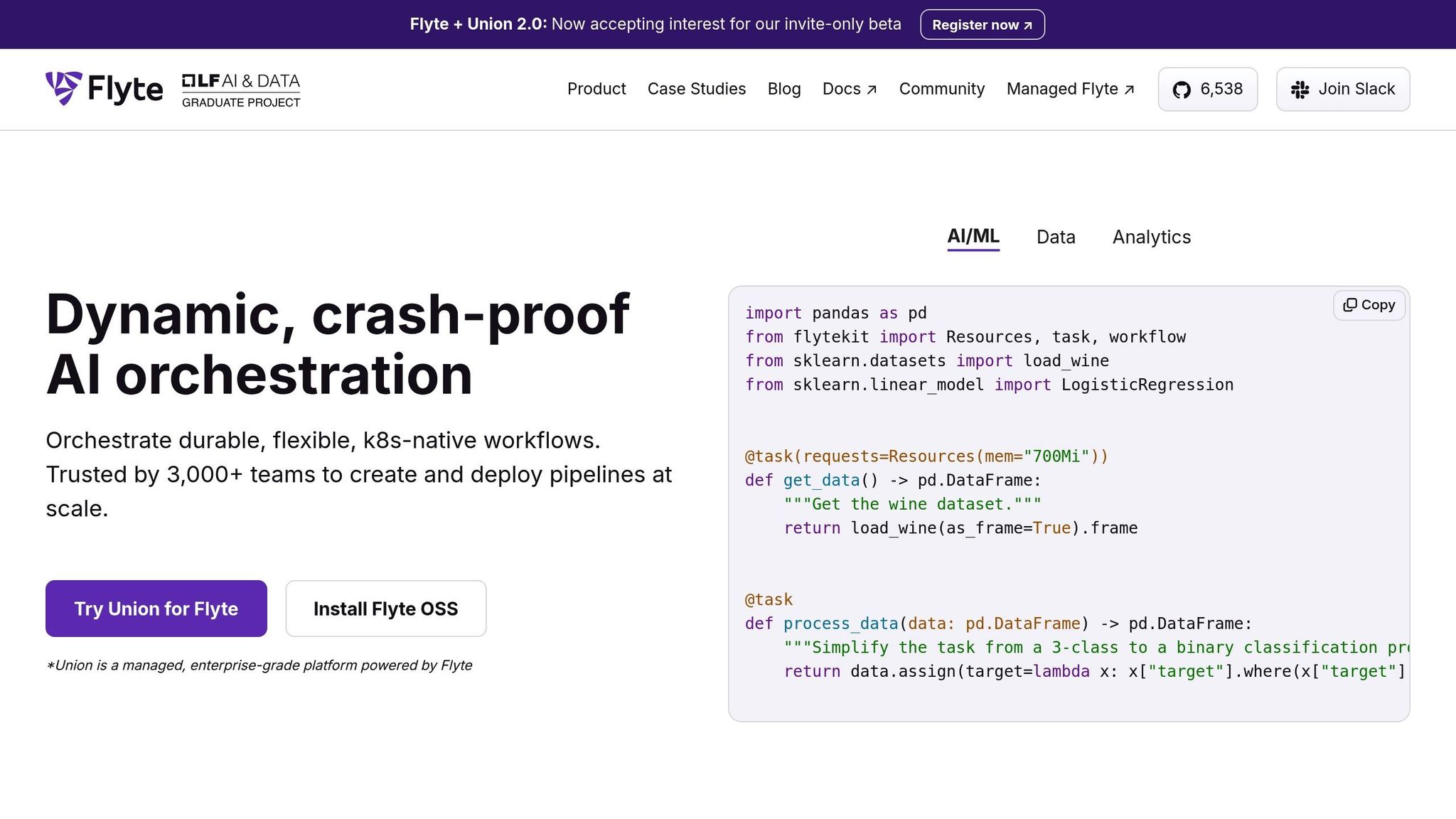
Flyte is an open-source platform designed to orchestrate workflows for data and machine learning tasks. Developed by Lyft, it emphasizes type safety and reproducibility, making it ideal for managing complex AI model pipelines at scale.
One standout feature of Flyte is its ability to track data lineage. Each workflow execution captures detailed metadata about inputs, outputs, and transformations, simplifying debugging and ensuring results can be reliably reproduced across different environments.
Flyte is built on Kubernetes, enabling it to scale resources automatically based on workload demands. It can handle anything from straightforward data processing tasks to intricate, multi-stage machine learning pipelines with hundreds of parallel tasks.
The platform uses a lazy evaluation method, executing tasks only when all dependencies are met. This reduces computational overhead and optimizes pipeline efficiency. Flyte's scheduler allocates resources intelligently, ensuring compute-heavy tasks get the power they need while avoiding resource conflicts.
Flyte also supports multi-cluster deployments, making it possible to distribute workloads across various cloud regions or even on-premises setups. This is particularly useful for organizations working with geographically dispersed datasets or needing to adhere to data residency regulations. Combined with its seamless integration capabilities, Flyte is well-suited for large-scale AI and ML operations.
Flyte integrates smoothly with popular machine learning tools through its FlyteKit Python SDK. Data scientists can build workflows using familiar libraries like TensorFlow, PyTorch, XGBoost, and scikit-learn, all within a Python-based environment.
The platform also includes plugins for services like AWS SageMaker, Google Cloud AI Platform, and Azure ML, managing authentication, resource provisioning, and job monitoring automatically.
Flyte’s containerized approach ensures that every workflow component runs in an isolated environment with clearly defined dependencies. Each task can specify its own Docker image, Python libraries, and resource needs. This setup eliminates the common "it works on my machine" problem, making deployments more consistent and reliable. Such robust integration also supports Flyte’s governance capabilities.
Flyte provides detailed audit trails and data lineage tracking for every workflow execution. Logs capture which data was processed, what transformations were applied, and who initiated the workflow, making it especially valuable for industries with strict regulatory requirements.
The platform includes multi-level role-based access control (RBAC), enabling administrators to manage permissions for creating, modifying, or running workflows.
Version control is a core feature of Flyte. Every workflow, task, and launch plan is automatically versioned, making it easy to roll back to previous iterations or compare different versions of a pipeline. This versioning also extends to the underlying code, dependencies, and execution environments, ensuring full traceability.
Flyte is designed to keep costs in check. It uses spot instances to lower compute expenses and provides detailed metrics to help identify resource bottlenecks. Additionally, the platform has a caching mechanism that reuses outputs from previously executed tasks when inputs remain unchanged.
Resource requests and limits can be set for individual tasks, preventing any single job from monopolizing cluster resources. Flyte’s caching feature is particularly useful for iterative workflows, where data scientists often re-run parts of their pipelines with minor adjustments. By reusing outputs, it significantly reduces both computation time and costs, making Flyte an efficient choice for enterprise-level AI orchestration.
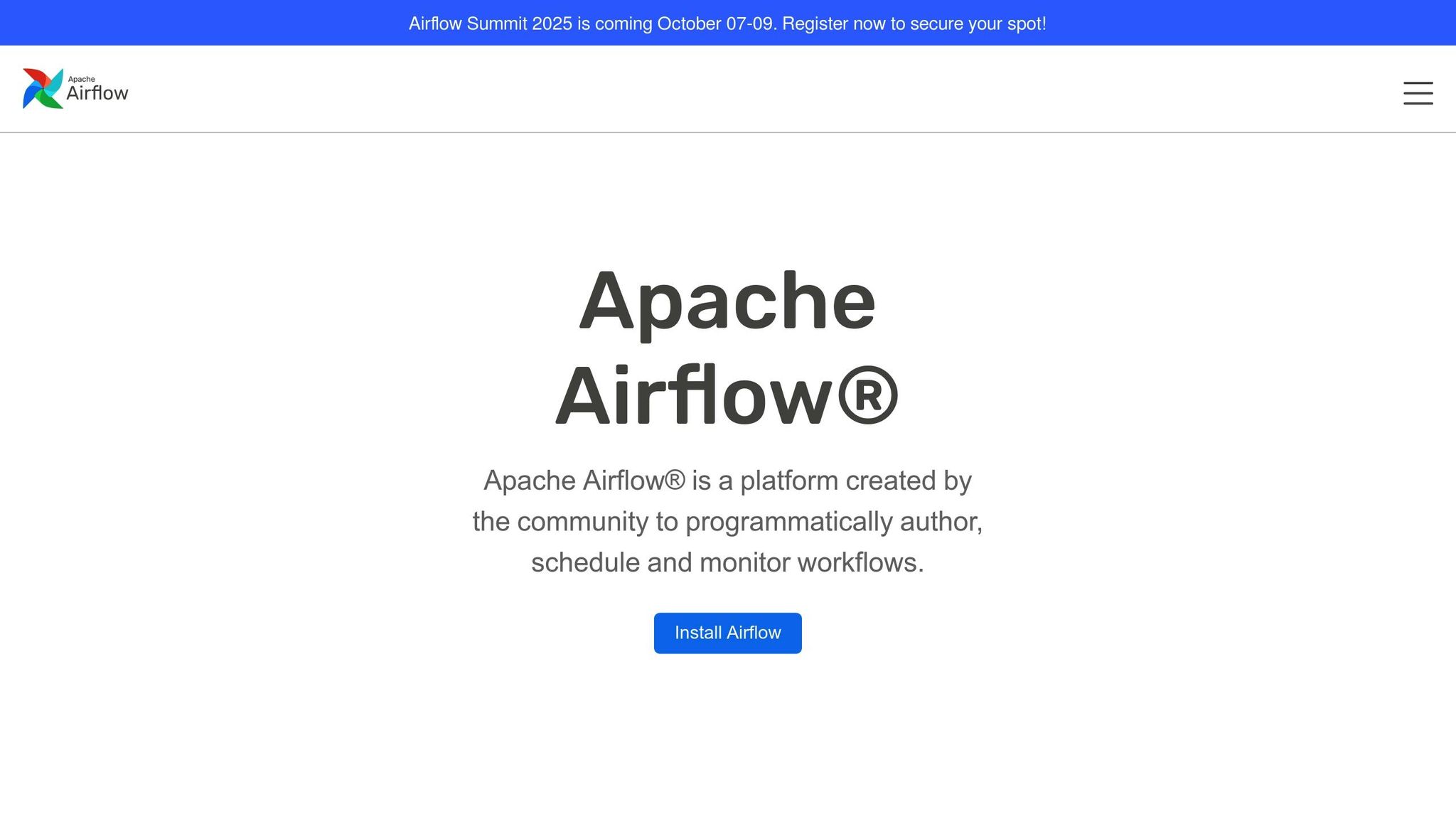
Closing out the list is Apache Airflow, a well-established open-source tool designed to manage the entire machine learning lifecycle. With its ability to orchestrate complex workflows, Apache Airflow seamlessly integrates with popular tools like TensorFlow, PyTorch, AWS SageMaker, Google Cloud AI Platform, and Azure Machine Learning.
What sets Apache Airflow apart is its capability to handle advanced workflows, including those for generative AI. It supports processes such as embedding models, vector databases, and distributed computing, making it a powerful option for streamlining retrieval-augmented generation in generative AI applications.
Choose the orchestration tool that best aligns with your needs, expertise, and goals. Below is a comparison of key performance areas across popular platforms.
| Feature | prompts.ai | Kubeflow | Prefect | Flyte | Apache Airflow |
|---|---|---|---|---|---|
| Primary Focus | Enterprise AI orchestration with 35+ LLMs | End-to-end ML lifecycle | Data workflow automation | ML workflow orchestration | General workflow management |
| Ease of Setup | Cloud-based, instant access | Complex Kubernetes setup | Simple Python installation | Moderate setup required | Moderate to complex setup |
| Model Support | 35+ LLMs (GPT-5, Claude, LLaMA, Gemini) | Custom model deployment | Limited AI model focus | Strong ML model support | Flexible integration options |
| Cost Management | Built-in FinOps, up to 98% cost reduction | Infrastructure costs vary | Usage-based pricing | Cloud costs | Open-source, infrastructure costs |
| User Interface | Unified dashboard for all models | Web-based ML pipelines | Modern Python-native UI | Web-based workflow designer | Web-based DAG management |
| Enterprise Features | Governance, compliance, audit trails | Enterprise ML operations | Collaboration features | Data lineage, versioning | Role-based access control |
| Learning Curve | Minimal for business users | Steep, requires ML expertise | Moderate Python knowledge | Moderate–steep | Moderate, requires workflow concepts |
| Best For | Scalable multi-model deployment | Complete ML lifecycle management | Data engineering teams | ML research and production | Complex workflow automation |
| Pricing Model | Pay-as-you-go TOKN credits | Open-source (infrastructure costs) | Freemium with paid tiers | Open-source (cloud costs) | Open-source (infrastructure costs) |
| Community Support | Prompt engineering community | Large ML community | Growing Python community | Emerging ML community | Extensive workflow community |
This table highlights the main features of each platform. Below, we dive into the unique strengths of each tool.
Key Strengths Breakdown:
Your decision should hinge on what matters most to you: immediate AI access (prompts.ai), comprehensive ML control (Kubeflow), developer-friendly simplicity (Prefect), research-focused reproducibility (Flyte), or broad workflow flexibility (Apache Airflow).
The rapid evolution of AI orchestration is reshaping how organizations handle complex workflows, demanding solutions that prioritize reliability, governance, and scalability. The five tools highlighted here showcase a range of strategies for managing AI models and data pipelines in production settings.
Reliability is non-negotiable - any downtime can translate directly into lost revenue. Each tool approaches this challenge differently, whether through the enterprise-grade infrastructure of prompts.ai, trusted by Fortune 500 companies, or the proven workflow management capabilities of Apache Airflow. These features ensure smooth operations while minimizing disruptions.
Governance is equally critical, particularly for enterprises dealing with sensitive data. Features like tracking, audit trails, and access controls help maintain accountability and compliance. When evaluating platforms, consider how they handle data lineage, user permissions, and regulatory requirements specific to your industry.
Scalability is another key factor, as AI models and data volumes continue to grow. A well-chosen orchestration platform can help manage these demands efficiently, reducing software costs and supporting long-term operational efficiency.
Selecting the right orchestration tool requires balancing technical capabilities with regulatory obligations. Consider your team’s expertise, workflow complexity, and compliance needs. For teams with limited DevOps resources, cloud-native platforms might be the most practical option. Meanwhile, organizations with stringent data sovereignty requirements may lean toward self-hosted solutions.
The choice you make today will have a lasting impact on your AI capabilities. Take the time to evaluate your needs, test shortlisted platforms through pilot projects, and factor in both current priorities and future growth. These tools not only streamline deployment but also provide the operational and compliance frameworks essential for successful AI implementations.
AI model orchestration tools simplify compliance and governance by centralizing critical tasks such as policy enforcement, access management, and risk oversight. By automating these workflows, they ensure AI models adhere to industry regulations, making the process of reviewing and approving changes more efficient while maintaining full transparency.
These tools also support ongoing monitoring of AI systems, allowing organizations to swiftly detect and address potential compliance challenges. By minimizing risks and ensuring regulatory standards are met, they offer a dependable system for managing AI in a responsible and efficient manner.
For businesses with smaller DevOps teams, selecting an AI model orchestration tool that prioritizes simplicity, automation, and smooth integration can make all the difference. These features minimize the need for deep technical expertise, allowing teams to concentrate on achieving impactful outcomes.
When evaluating tools, consider those that:
Focusing on these aspects ensures that businesses can deploy and manage AI workflows effectively without straining their existing resources.
AI orchestration tools are built to work seamlessly with a wide range of AI/ML frameworks and leading cloud platforms, including AWS, GCP, and Azure. They leverage APIs, SDKs, or native integrations to handle critical tasks like model deployment, monitoring, and scaling across diverse environments.
Most platforms also support containerized deployments, simplifying the process of running workflows on cloud infrastructure. This approach provides the adaptability and scalability teams need to optimize their AI operations without overhauling their existing systems.


